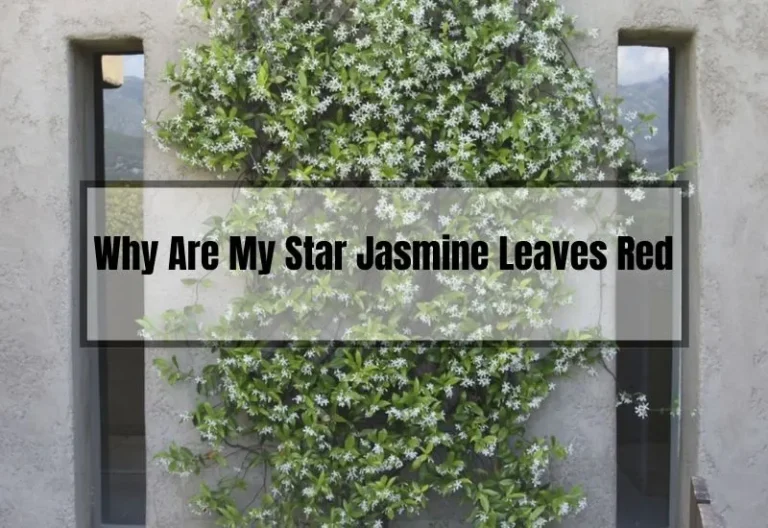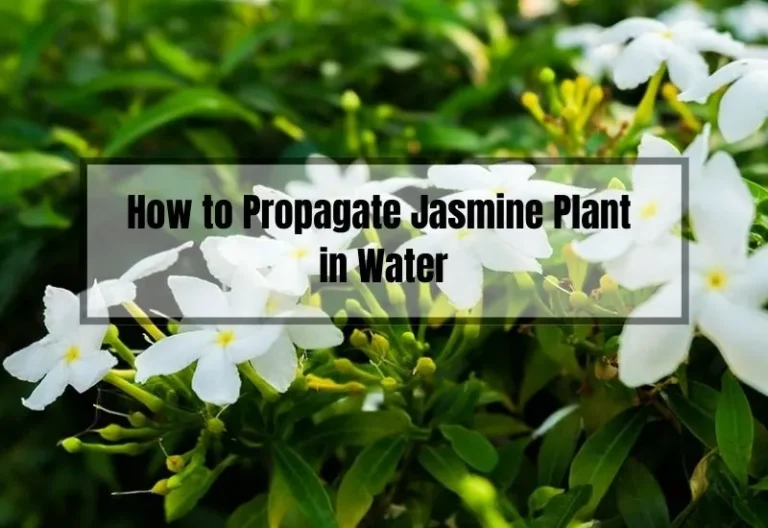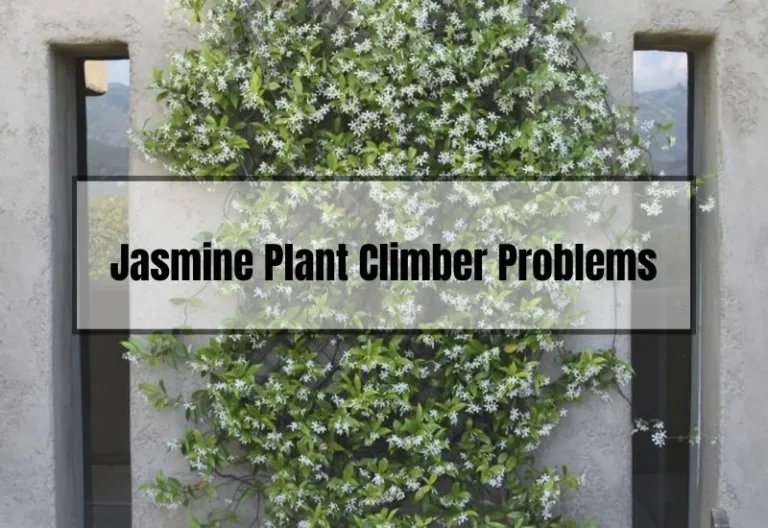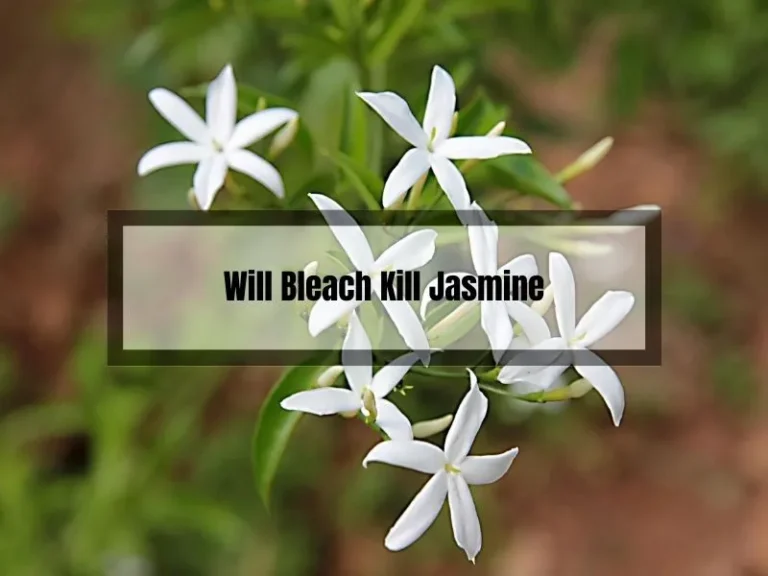How to Propagate Star Jasmine from Cuttings: Expert Tips for Success
Are you looking to propagate star jasmine from cuttings? Propagating star jasmine from cuttings is an excellent way to grow genetically identical plants to the parent. In this guide, we’ll show you how to do it.
First, let’s talk about when to take cuttings. The best time to take cuttings is in the summer, but you can also do it in the winter. Just make sure the plant is healthy and not in bloom. You’ll want to select a semi-hardwood part of the stem that is about 7cm (3in) long. Make sure it has at least one node (where the leaves grow from) and no flowers.
Once you have your cutting, you’ll need to remove the lower leaves from the stem, leaving a few sets of leaves at the top. Dip the cut end of the stem into a rooting hormone and plant it in a well-draining soil mix. Keep the soil consistently moist and the cutting in a warm location with indirect sunlight. In a few weeks, you should see new growth!
Key Takeaways
- Propagating star jasmine from cuttings is a great way to grow new plants that are genetically identical to the parent plant.
- The best time to take cuttings is in the summer, and you’ll want to select a semi-hardwood part of the stem that is about 7cm (3in) long.
- To propagate star jasmine from cuttings, remove the lower leaves from the stem, dip the cut end of the stem into a rooting hormone, and plant it in a well-draining soil mix. Keep the soil consistently moist and the cutting in a warm location with indirect sunlight.

How to Propagate Star Jasmine from Cuttings
So, you want to propagate your own star jasmine from cuttings? It’s easier than you think! Here are the steps to follow:
1. Choose the right time: The best time to take cuttings is in summer, but you can also do it in winter. Just make sure the plant is healthy and not in bloom.
2. Select the right cutting: Choose a semi-hardwood part of the stem that is about 7cm (3in) long. Make sure it has at least one node (where the leaves grow from) and no flowers.
3. Prepare the cutting: Remove the leaves from the bottom part of the cutting and dip it in rooting hormone powder. This will help it to develop roots.
4. Plant the cutting: Use a mix of perlite and peat moss to “strike” (root) the cutting. Make a hole in the mix and insert the cutting. Water it well and cover it with a plastic bag to hold moisture.
5. Care for the cutting: Keep the cutting in a sheltered area with bright, indirect light. Keep the propagation mix moist but not waterlogged. After a few weeks, you should see roots developing.
6. Transplant the cutting: Once the roots are about 2-3cm (1in) long, it’s time to transplant the cutting into a pot with potting soil. Keep it in a bright location, but not in direct sunlight.
7. Water and fertilize: Water the plant regularly, but don’t overwater it. Fertilize it once a month during the growing season with a balanced fertilizer.
That’s it! With a little patience and care, you can propagate your own star jasmine from cuttings and enjoy its beautiful flowers and fragrance.
When is the Best Time to Take Cuttings?
The best time to take cuttings of star jasmine is during the summer when the plant is actively growing. However, cuttings can also be taken in the winter, as long as they are kept in a sheltered area and the propagation mix is kept moist.
What Tools Do I Need?
To take cuttings of star jasmine, you will need a sharp, clean pair of pruning shears or scissors. You may also want to have rooting hormone powder on hand to help encourage root growth.
What Type of Soil is Best?
The best soil for propagating star jasmine cuttings is a mix of perlite and peat moss. This will help to keep the cuttings moist and provide the necessary nutrients for root growth.
It is also important to keep the cuttings in a sheltered area to protect them from harsh weather conditions.
Choosing the Right Time and Place
The best time to take cuttings is during the summer months when the plant is actively growing. Look for healthy stems that are free of disease or damage. Cuttings should be taken from the upper portion of the plant, as lower stems may not root as easily.
It’s also important to choose the right place to take your cuttings. A shaded area with good air circulation is ideal. Avoid taking cuttings during periods of extreme heat or cold, as this can stress the plant and reduce your chances of success.
Preparing the Cuttings
Once you’ve selected your cuttings, it’s time to prepare them for rooting. Remove all leaves from the bottom half of the stem, leaving only a few leaves at the top. This will help the cutting focus its energy on growing roots rather than supporting leaves.
If you’re using a rooting hormone, dip the cut end of the stem into the powder before planting. This will help stimulate root growth and increase your chances of success.
Planting and Caring for Cuttings
When planting your cuttings, use a well-draining soil mixture and make sure the soil is moist but not waterlogged. Place the cuttings in a shaded area with good air circulation, and keep the soil moist but not waterlogged. You can cover the cuttings with a plastic bag or cloche to help retain moisture, but be sure to remove it periodically to prevent mold or mildew from forming.
After a few weeks, you should start to see new growth on your cuttings. At this point, you can remove the plastic bag or cloche and gradually expose the cuttings to more light. Once the cuttings have established roots and new growth, you can transplant them to their permanent location.
With a little patience and care, propagating star jasmine from cuttings can be a rewarding and satisfying experience. By following these simple steps, you can enjoy the beauty and fragrance of this lovely plant in your own garden.
Troubleshooting Common Issues in Star Jasmine Propagation
Propagating star jasmine can be a rewarding experience, but it’s not without its challenges. In this section, I’ll cover some common issues you may encounter during the propagation process and offer some tips for addressing them.
Root Rot and Fungal Infections
Root rot and fungal infections are common problems when propagating star jasmine from cuttings. These issues can be caused by overwatering, poor drainage, or contaminated soil. Symptoms of root rot include yellowing leaves, wilting, and a foul smell.
To prevent root rot and fungal infections, make sure to use well-draining soil and avoid overwatering. If you suspect that your cuttings are infected, remove them from the soil immediately and discard the affected parts. You can also treat the remaining cuttings with a fungicide to prevent further spread.
Slow or no Root Growth
If your star jasmine cuttings are not developing roots, there could be several reasons why. One common issue is using cuttings that are too old or too young. Cuttings that are too old may be too woody to root, while cuttings that are too young may not have developed enough tissue to support root growth.
To encourage root development, make sure to use semi-hardwood cuttings that are 7cm (3in) in length. You can also try using a rooting hormone to stimulate growth. Make sure to keep the cuttings in a warm, humid environment and avoid exposing them to direct sunlight.
Pest Control and Management
Star jasmine cuttings are susceptible to a variety of pests, including spider mites, mealybugs, and aphids. These pests can cause damage to the leaves and stems, and can even kill the cuttings if left untreated.
To control pests, you can use a variety of environmentally friendly methods. For example, you can spray the cuttings with a mixture of water and dish soap, or introduce natural predators like ladybugs. You can also try using neem oil, which is a natural insecticide that is safe for plants.
Common Mistakes and How to Avoid Them
Propagating star jasmine from cuttings is a simple and rewarding process. However, there are a few common mistakes that people make that can hinder the success of their propagation efforts. Here are some of the most common mistakes and how you can avoid them:
Mistake #1: Using the Wrong Cutting
One of the most important factors in propagating star jasmine from cuttings is selecting the right cutting. Choose a semi-hardwood part of the stem that is about 7cm (3in) long.
Make sure it has at least one node (where the leaves grow from) and no flowers. Using a cutting that is too soft or too hard can reduce the chances of successful rooting.
Mistake #2: Not Preparing the Cutting Properly
Before you plant your cutting, make sure to prepare it properly. Remove any leaves from the lower half of the cutting, leaving only a few leaves at the top. This will help the cutting conserve energy and focus on rooting.
Also, make a clean cut at the bottom of the stem with a sharp knife or pruner. A jagged or torn cut can make it harder for the cutting to root.
Mistake #3: Using the Wrong Soil
Star jasmine cuttings need a well-draining soil mix to root successfully. A mix of perlite and peat moss is ideal.
Avoid using heavy soils that retain too much moisture, as this can lead to root rot and other problems.
Mistake #4: Overwatering or Underwatering
Overwatering or underwatering your cuttings can be a common mistake. Keep the soil moist, but not waterlogged.
Check the soil daily and water as needed. A good rule of thumb is to water when the top inch of soil feels dry to the touch.
Mistake #5: Not Providing Enough Light
Star jasmine cuttings need bright, indirect light to root successfully. Place your cuttings in a location that receives bright, filtered light. Avoid direct sunlight, as this can scorch the leaves and damage the cutting.
By avoiding these common mistakes, you can increase your chances of successfully propagating star jasmine from cuttings. Remember to be patient and give your cuttings time to root and establish themselves before transplanting them to their permanent location.
Additional Tips for Success
Now that you know how to propagate star jasmine from cuttings, here are some additional tips to help ensure your success.
1. Timing is Key
Timing is crucial when it comes to taking cuttings. As mentioned earlier, the best time to take cuttings is during the summer months, but you can also take them in winter.
However, it’s important to make sure the plant is healthy and not in bloom. Taking cuttings from a healthy plant will increase your chances of success.
2. Choose the Right Cutting
Choosing the right cutting is also important. Look for a semi-hardwood part of the stem that is about 7cm (3in) long. Make sure it has at least one node (where the leaves grow from) and no flowers. Taking cuttings from the right part of the plant will help ensure that they root and grow successfully.
3. Use the Right Soil
Using the right soil is crucial when it comes to propagating star jasmine. A well-draining potting mix that is rich in organic matter is ideal.
You can also add perlite or sand to the mix to improve drainage. Avoid using heavy soils that retain too much moisture, as this can lead to root rot.
4. Keep the Soil Moist
Keeping the soil moist is important for successful rooting. However, be careful not to overwater the cuttings, as this can cause them to rot.
Water the cuttings regularly, but allow the soil to dry out slightly between waterings. You can also mist the cuttings with water to help keep them hydrated.
5. Provide the Right Conditions
Providing the right conditions is essential for successful propagation. Keep the cuttings in a warm, bright location, but out of direct sunlight. You can also cover the cuttings with a plastic bag or dome to help maintain humidity and prevent them from drying out.
By following these additional tips, you can increase your chances of successfully propagating star jasmine from cuttings. Good luck!
FAQs
I know you might have some questions about propagating star jasmine from cuttings. Here are some of the most frequently asked questions:
When is the best time to take cuttings?
Most gardeners recommend taking cuttings in summer, but I have had success taking them in winter. Just make sure to use semi-hardwood parts of the stem.
How big should the cuttings be?
It’s best to keep the cuttings small, around 7cm (3in) is perfect. This will help the cutting take root more easily.
What kind of soil should I use?
The best soil for propagating star jasmine plants includes a mixture of peat moss, vermiculite, perlite, and loamy sand. This will provide the right nutrients and drainage for your cuttings to thrive.
How do I know if my cuttings are rooting?
You can check for roots by gently tugging on the cutting. If you feel resistance, it means the roots are starting to form. You can also check for new growth on the stem or leaves.
How often should I water my cuttings?
It’s important to keep the propagation mix moist, but not waterlogged. Check the soil regularly and water when it feels dry to the touch.
Can I propagate star jasmine from seeds?
Yes, you can propagate star jasmine from seeds, but it can be more difficult than taking cuttings. It can also take longer for the plants to mature and start flowering.
Remember, propagating plants can be a fun and rewarding experience. Don’t be afraid to experiment and try new things. With a little patience and care, you can grow your own beautiful star jasmine plants.
Conclusion
In conclusion, propagating star jasmine from cuttings is a great way to expand your garden without spending a lot of money. With the right tools and techniques, you can grow beautiful and healthy plants that will thrive in your garden.
Remember to choose a healthy source plant and take cuttings during the right time of year. Make sure to prepare the soil properly and keep the cuttings moist and warm. With patience and care, you can watch your cuttings grow into beautiful new plants.
I hope this guide has been helpful to you in your gardening journey. If you have any questions or comments, feel free to leave them below. Happy gardening!
Related Posts:






